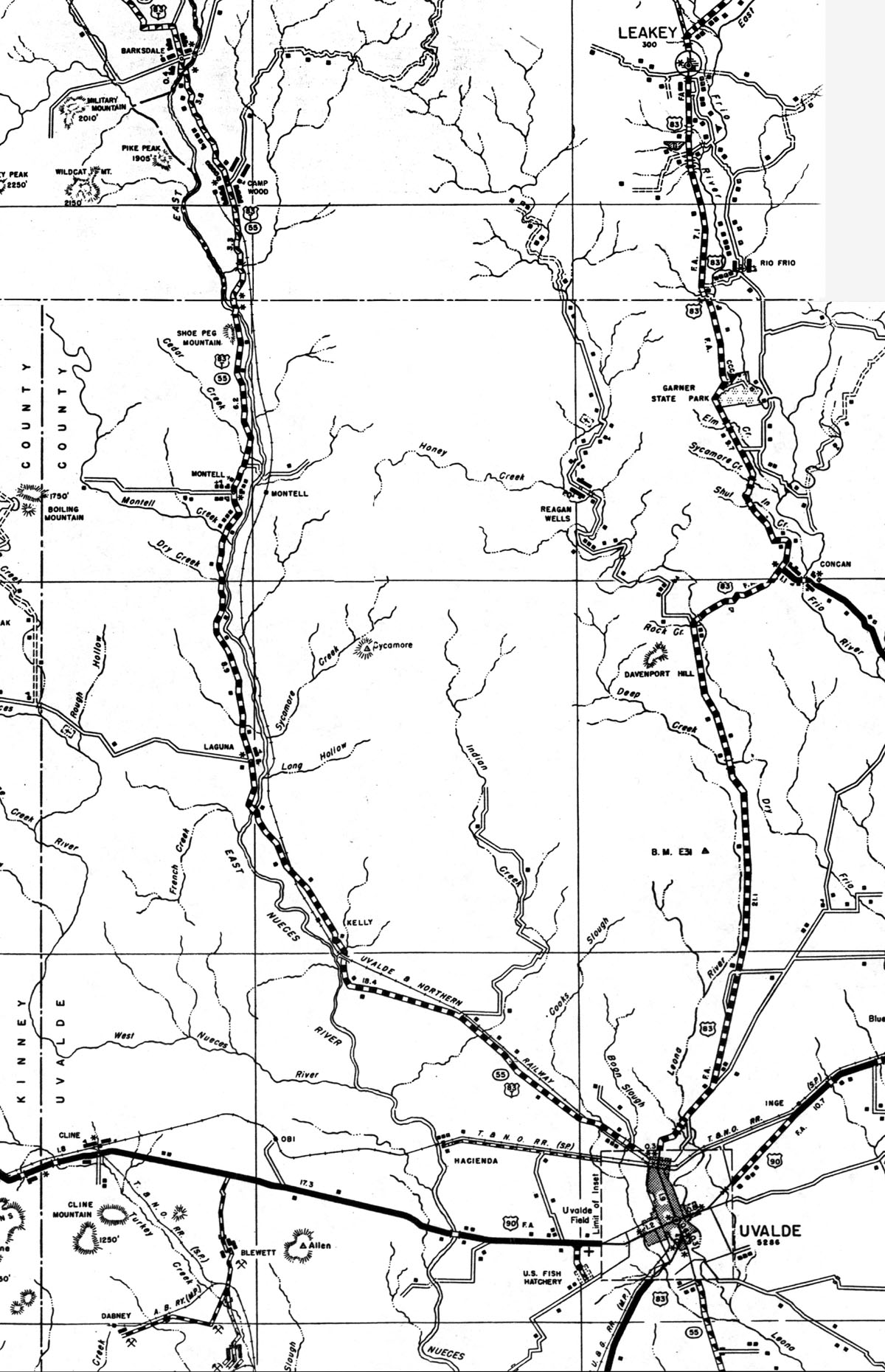The Uvalde & Northern Railway
The Uvalde and Northern Railway was a short-line railroad located in Texas, running north from Uvalde, hence its name. The railway provided freight and passenger transportation, connecting small towns and ranches in the area to the larger cities and markets. The Uvalde and Northern Railway's history was quite short, and was absorbed into another railroad company before its tracks were eventually abandoned. Today we explore the history of this line, which lasted only twenty years before abandonment.
 |
| Uvalde & Northern Locomotive (Texas Transportation Museum) |
 |
| Map showing the route of the U&N in 1937. (Texas Transportation Museum) |
"Cedar posts were once a vital requirement in the housing construction business in San Antonio and indeed across Texas. They were used as house foundations. The availability of vast amounts of this vital commodity in the area north of Uvalde made the construction and operation of a short rail line entirely appropriate." (Texas Transportation Museum)
The railway relied heavily on freight traffic, primarily transporting livestock, agricultural products, and lumber. It also offered passenger service, with trains running several times a week. The railway was eventually merged into the San Antonio and Aransas Pass Railway, which in turn was acquired by the Southern Pacific Railroad. While the line carried both freight and passengers, it earned the vast majority of its revenues from the latter, and thus passenger service stopped in 1932.
 |
| Image and history: Texas Transportation Museum |
One interesting aspect of the Uvalde and Northern Railway's operations was its integral role in the cedar post industry. Cedar posts were a crucial resource in the construction business, used for house foundations. The railway's location in an area north of Uvalde, rich in cedar resources, made it a logical choice for transporting this vital commodity. The availability of cedar posts contributed to the railway's success and justified the construction and operation of the short rail line, at least for a time.
According to Ochoa at TSA Online regarding the demise of the line, "For nearly two decades the railroad was used to transport cedar posts, wood, and mohair. However, a suitable market for kaolin deposits was never developed, the market for cedar posts declined, and the wool and mohair began moving by truck."
The U&N faced numerous challenges in its later years, including washouts along its route and financial deficits. The railway ran its last train on August 8, 1941, marking the end of its operations. In the mid-20th century, the use of automobiles and trucks for transportation led to a decline in rail traffic, and many small railroads like the Uvalde and Northern Railway were abandoned.
However, the ultimate demise of the railroad was World War II. The line fell victim to the second large abandonment of railroad lines in the United States, as iron rails became a wartime ration, and any availability of the resource was highly valued. Thus, it was worth more in infrastructure than in revenues, and was promptly torn up as a result.
Thanks as always for reading!



Comments
Post a Comment